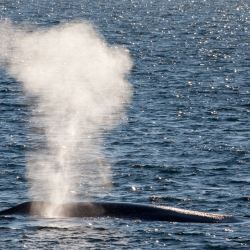The exhaled breath or “blow” squirted from the Eastern Australian humpback whale is replete with its own viral ecosystem or virome. Until now, understanding the “diversity, evolution and disease associations” of viruses in such natural habitats as an aquatic environment has posed quite the challenge for scientists when such marine wildlife is logistically inaccessible. With the help of Unmanned Aerial Vehicles (UAVs) or drones, researchers were able to capture samples of this elusive whale to study.
Their recently published findings revealed a number of new viruses from five different viral families. It is likely this was the first study of this kind to use drones for surveillance and specimen collection. Though it only engaged a small number of animals, the proof of concept was a success and ignites the possibilities for further scientific exploration and discovery.
For this reason, I had listed delivery-based technology in my top 8 list of med, tech advances of 2017 (see here). Consider the ability of UAVs to deliver life-saving equipment or perhaps medications to remote areas - the reality might be sooner than you think.
A research letter published in the Journal of the American Medical Association (JAMA) by a Swedish team explored the option in Time to Delivery of an Automated External Defibrillator (AED) Using a Drone for Simulated Out-of-Hospital Cardiac Arrests vs Emergency Medical Services. After comparing data of GPS-enabled drones to actual ambulance response times to areas without medical access, the researchers demonstrated a median reduction in response time of 16 minutes and 39 seconds. Granted, these were not real-time scenarios.
Given this was all computer generated data, much more needs to be studied in terms of weather challenges, ability to integrate with 911 dispatch centers and survival with EMS versus bystander intervention, to name a few. But, this along with possible drug delivery of EpiPens or on the battlefield for supplies like wound care could be a whole new avenue for reducing barriers to access. Refining drone usage and overcoming roadblocks, when done responsibly and in a targeted manner, could hold great promise.
In the medical or scientific space, it is becoming clear this technology could facilitate endless applications. Though only an initial study with whales, the specimens collected from here or in future investigations could serve to inform on fecal-oral versus respiratory routes of disease transmission, in general, and between gulls and whales. How and what diseases spread or whether they have pathogenic or zoonotic potential can only deepen our knowledge about the interaction of many species in unique and previously unknown environments. The sky, and now the sea, is the limit.
Source:
Jemma L. Geoghegan,Vanessa Pirotta, Erin Harvey, Alastair Smith, Jan P. Buchmann, Martin Ostrowski, John-Sebastian Eden, Robert Harcourt and Edward C. Holmes. Virological Sampling of Inaccessible Wildlife with Drones. Viruses 2018, 10(6), 300; https://doi.org/10.3390/v10060300

